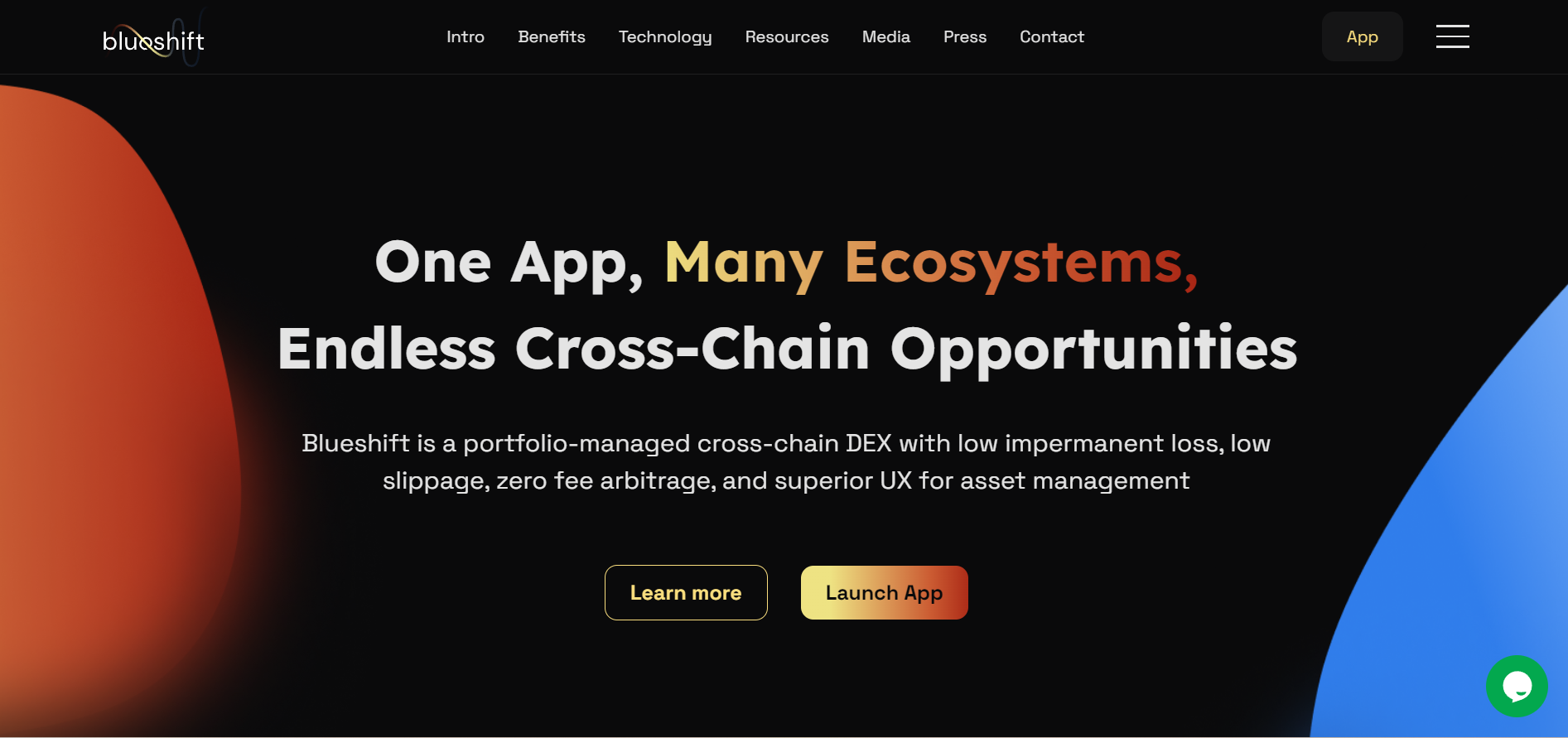
Blueshift offers a decentralized exchange and crypto asset management protocol, which completely surpasses the old style of existing platforms.
Blueshift operates an AMM (Automated Market Maker) using advanced technological innovations and based on a portfolio approach for liquidity control.
As a result, it is able to establish and enforce a community driven space for liquidity providers with tons of outstanding benefits.
Its ultimate goal is a sustainable expansion to the world of traditional finance, replacing obsolete stiff institutions, bringing more impacts to the society, and becoming the number one cross chain crypto asset management solution.
Blueshift: Founding the Future
The founder and CEO of Blueshift is Igor Mikhalev, who is a Partner and Head of Emerging Tech strategy at EY-Parthenon. Igor has a strong and diverse background in financial consulting.
He also holds the degree for PhD Researcher and MBA certified by Amsterdam Business School. From very early on, Igor had been exposed to blockchain and other financial research projects.
Formerly working in the position of Director and Blockchain Chapter Lead at BCG (Boston Consulting Group), Igor had served many clients as well as nurtured the seed of a community centric crypto initiative.
It was when he joined hands with Rhys Lindmark from MIT Media Lab to create Fair Launch, an idea that gave out tokens to the public. At the same time, one of Igor’s clients at BCG was Cardano’s founder, Charles Hoskinson.
During the development of a decentralized consortium funding mechanism for Cardano, Igor and his team eventually came up with launching Liquify, the predecessor of Blueshift.
The project also tightened the relationship between Igor and Charles, as until now Cardano still remains as one main strategic partner of Blueshift.
How it Works
Blueshift follows the same principles of the most popular traditional financial indices such as S&P 500, Down Jones, Nasdaq to ideate a practical application on decentralized foundation.
This vision is materialized thanks to the portfolio approach. Instead of using pairs to hold liquidity like in old protocols, Blueshift creates a plenty of portfolios, each including a list of accepted tokens.
Those tokens are managed by protocol users, who can determine which one to keep or remove through DAO voting. Any of those can also be selected for investment and gaining of the share of the portfolio.
With this approach, liquidity providers are aware of and agree that the value of their actual owned assets will vary instantly, and can be exchanged without any restrictions within the same portfolio.
Swapping tokens in one portfolio in a process where the system generates a temporary virtual pair to execute the liquidity exchange. After the transaction is done, the virtual pair will vanish while the internal oracle stores the price of the token swapped.
By initiating Liquidity portfolios and virtual pairs, Blueshift wishes to provide a more inclusive and free space for the decentralized finance world. It could pave the way for a broader, more convenient access point between crypto assets and potential users, including traditional investors and traders.
Achievements
Through over 8 years of development and operation, Blueshift has completed a number of notable trophies. It includes a successful seed capital funding of 3 million USD raised by Shima Capital, or taking over the top DEX on Milkomeda.
Blueshift has been listed on major listing platforms, such as CoinGecko, Coinmarketcap, DeFi Lama and sealed the deal with several strategic partners, including Multichain, MEXC Global, Next Chymia, Nomad, Symbiosis and CelerNetwork.
Since its IDO, BLUES token price has witnessed a growth of 764%, with the All-Time High (ATH) peaked at 2.16 USD in May.
The monthly trading volume has exceeded $2 million USD. The team also successfully passed through two security audits by Certik, proving their total safety and protection over users’ crypto assets.
Who does Blueshift serve?
Blueshift opens its platform to multiple target audiences. At present, liquidity providers are one key focus of Blueshift, as the team aims to connect as many liquidities as possible.
This is a critical element for the platform growth, since the more portfolios are available, the more funds will be invested in the protocol. Blueshift is continually pulling liquidity providers through irresistible pay-out and rewarding plans.
The next group is traders and arbitrageurs. These people will go to the platform and conduct swap transactions, which generates the actual circulation of crypto assets across the ecosystem.
To attract these targets, Blueshift offers them low price slippage and favorably low fees, even down to zero. Blueshift also welcomes any DeFi project which wants to be listed and reach out to a larger user base of the platform.
Not stopping there, its vision is to touch their fingers on the traditional finance spectrum, such as banks and payment processors, as an alternative replacement with the utter comprehensiveness and more societal impacts.
BLUES token
The native token of Blueshift is called BLUES, which is a Cardano Native Token (CNT) as well as Milkomeda, another strategic partner of Blueshift. According to its roadmap, BLUES will be bridged with Ethereum and other popular chains.
As the native token of the system, BLUES opens the key for the DAO (Decentralized Autonomous Organization), which allows BLUES holders to vote for portfolio changes by adding, removing or adjusting the weights of any tokens.
In addition, BLUES plays a core role in the reward system, as a proportion of the supply (up to almost 46%) will be distributed to incentivize liquidity providers and token holders who stake crypto.
Benefits
Thanks to the new Automated Market Maker algorithm using liquidity portfolios and virtual pairs, Blueshift is capable of delivering a lot of tempting benefits to its users.
One most remarkable advantages Blueshift offers is the considerably reduced amount of impermanent loss. With Liquidity portfolios, liquidity providers are worry-free to enjoy LP fees with two to ten times less in impermanent losses.
As for traders and arbitrageurs, they are benefited from attractive low to zero fees, which surely is a huge motivation for higher engagement and involvement in swap trading.
The incentivization scheme of the tokenomics also entices members to stake their LPs and BLUES tokens more.
Blueshift also developed a smart minting system that is adoptable for multiple account farming. It is able to generate high annual percentage rates (APRs) and reduce inflation in token prices, hence lowering the risks in asset management and crypto swaps.
At the same time, it is a lot easier for users to join the protocol, since what they are required to do is contribute a single token to the liquidity pool.
On the other hand, once accepted, they are free to experience numerous other cryptocurrencies available within the portfolio. That is the vision towards a boundless access for everyone with interest in virtual financial instruments.
Final Thought
Along with the DAO voting mechanism, it enables the power of the community and raises democracy across the ecosystem. While DeFi is still in its early stages, Blueshift is taking the lead in a new global economy.
Utilizing cutting-edge technologies and all available resources, Blueshift is already claiming its position as a top Decentralized protocol for swaps, liquidity pools, farming or staking.



















